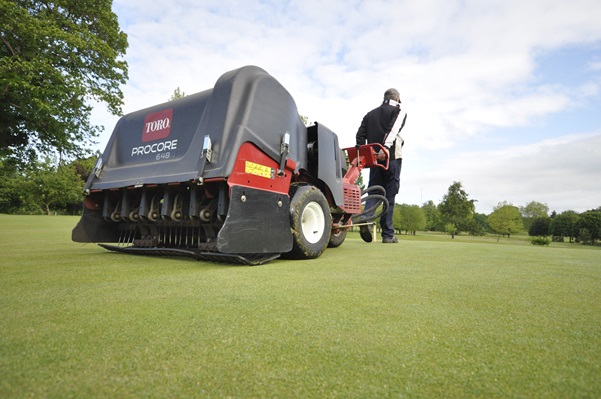Start 2021 with 'stress free' turf
There is no doubt that golf courses are facing unprecedented times, but it is important to keep on top of maintenance and ensure courses are in good condition for when golfers return.
Our technical expert, Colin Mumford says challenging seasonal conditions such as plummeting temperatures and excess rainfall in combination with Covid19 has affected many courses.
Don’t lockdown your turf management
Despite being in lockdown again, it is vital greenkeepers do all they can to start the year with ‘stress free’ turf. As a healthy course will be less susceptible to weeds, pests and diseases.
During the two previous 2020 lockdowns, greenkeepers were unable to carry out planned work and matters were made worse once the courses were opened, and golfers returned to the greens in their masses.
This has made the management and maintenance of courses very challenging over the last year. However, during this most recent lockdown, greenkeepers can undertake any maintenance work, which should hopefully allow them to catch up, weather permitting.
This will be a lifeline for greenkeepers, as the cold and wet conditions we have experienced this winter could result in long-term turf damage without the correct management, which could be detrimental to golf playability.
Top tips on achieving ‘stress free’ turf
Dr Mumford gives his top tips for the months ahead to ensure greenkeepers achieve stress free turf throughout the year.
- Switching/Brushing – This should be done daily to help remove dew off the playing surfaces. Doing this will help to reduce disease outbreaks and ensures a cleaner cut is achieved at mowing, preventing leaf damage and therefore plant stress
- Mowing – If plant health is a concern on your course, you can raise the height of cut (HOC) slightly, but be mindful that courses may open at short notice and it will need to return to the normal HOC to maximise playability
- Aeration/Verti-draining – If ground conditions are suitable on your course, aeration or verti-draining can help remove below ground compaction, allowing water to move more effectively through the rootzone, preventing water logging and surface damage to the course
- Cutting trees back – Overgrown trees can lead to shading and poor airflow over the course, leading to damp environments. Trimming back trees and hedges will help to prevent this
- Machine maintenance – Now is the perfect time for machinery maintenance, to ensure all machinery is in full working order when it is needed later in the year
Be prepared for golfers to return
Golf courses have been one of the first venues to open following a lockdown and so it is important to be prepared for when golfers return, as it can be at short notice.
- Hole positions – If weather conditions are still wet when golfers return, place the holes in areas to minimise the traffic on the course and damage to the turf
- Temporary courses – Letting golfers onto frozen courses that are beginning to thaw can result in roots breaking due to surface movement, leading to long-term course damage. If you are concerned about poor weather conditions, put temporary greens in play
- Roping off areas – Many courses have faced high traffic once they have opened following a lockdown and therefore it is worth re-routing player traffic flow by roping off any high traffic areas or areas that are susceptible to damage to preserve turf health
Dr Mumford says that turf stress during the winter can put plants under pressure, leaving it more susceptible to weeds, pests and diseases later in the year. Therefore, it is important to keep courses as healthy as possible from the outset.


